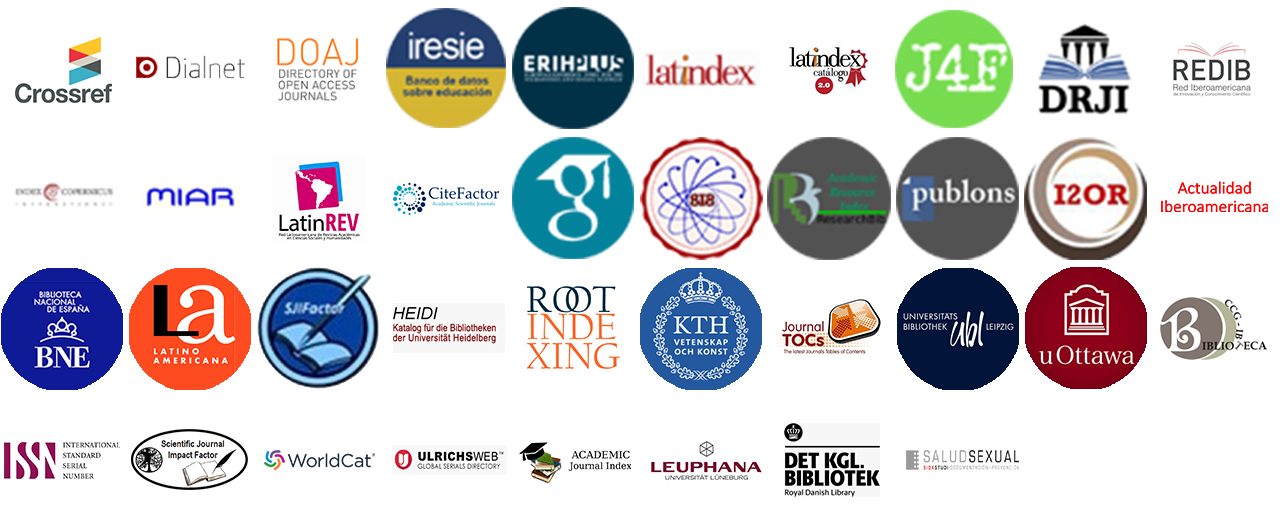Implementation of prediction techniques in the generation of electrical energy in the industrial sector
DOI:
https://doi.org/10.36825/RITI.08.15.003Keywords:
Techniques of Prediction, Energy, Decision MakingAbstract
Prediction techniques currently have great potential, through them you can obtain estimates or forecasts of future values in a reliable way, which can be used for decision making. However, industries are one of the largest consumers of electricity, so many of them use their own electric generators to be able to meet the energy demand that their processes require. But also, within this process there are problems or situations that are not beneficial, one of them, is that, if there is no monitoring and control in the generation of electrical energy in an adequate way, it will cause a great loss of monetary resources. For this reason, it is proposed to implement the prediction techniques within the power generation process to compare and select the technique that shows the best consumption forecast and thus avoid the loss of resources in the industry.
References
Toro Ocampo, E. M., Molina Cabrera, A., Garcés Ruiz, A. (2006). Pronóstico de bolsa de valores empleando técnicas inteligentes. Tecnura, 9 (18), 57-66.
Arahal, M. R., Berenguel , M., Rodríguez, F. (2006). Técnicas de predicción con aplicaciones en Ingeniería. Sevilla: Secretariado de Publicaciones de la Universidad de Sevilla.
Rueda, V. M., Velásquez Heano, J. D., Franco Cardona, C. J. (2011). Avances recientes en la predicción de la demanda de electricidad usando modelos no lineales. Dyna, 78 (167), 36-43.
Astorga Gómez, J. M., Aróstica Córdova, R. A., Iriarte Salinas, Y. A. (2016). Estimación del factor K en transformadores de distribución usando modelos de regresión lineal. Tecnura, 20 (48), 29-40.
Seber, G., Lee, A. J. (2003). Linear Regression Analysis (2 ed.). New York: John Wiley & Sons.
Permai, S. D., Tanty, H. (2018). Linear regression model using bayesian approach for energy performance of residential building. Procedia Computer Science, 135, 671-677. doi: http://dx.doi.org/10.1016/j.procs.2018.08.219
Carrasquilla, A., Chacón, A., Núñez, K., Gómez, O., Valverde, J., Guerrero, M. (2016). Regresión lineal simple y múltiple: aplicación en la predicción de variables naturales relacionadas con el crecimiento microalgal. Tecnología en Marcha, 29 (suppl. 5), 33-45. doi: https://dx.doi.org/10.18845/tm.v29i8.2983
Berlanga, V., Vilà, R. (2013). Cómo obtener un Modelo de Regresión Logística Binaria con SPSS. Reire Revista D'Innovació I Recerca En Educació, 7 (2), 105-118.
Barman, U., Dev Choudhury, R. (2020). Smartphone image based digital chlorophyll meter to estimate the value of citrus leaves chlorophyll using Linear Regression, LMBP-ANN and SCGBP-ANN. Journal of King Saud University - Computer and Information Sciences, in press. doi: https://doi.org/10.1016/j.jksuci.2020.01.005
Golizadeh Akhlaghi, Y., Ma, X., Zhao, X., Shittu, S., Li, J. (2019). A statistical model for dew point air cooler based on the multiple polynomial regression approach. Energy, 181, 868-881. doi: https://doi.org/10.1016/j.energy.2019.05.213
Anderson, D. R., Sweeney, D. J., Williams, T. A., Camm, J. D., Martin, K. (2011). Métodos cuantitativos para los negocio (11 ed.). México, D.F.: Cengage Learning.
Chien-Hua, C., Xuan-Qi, S., Jun-Biao, L. (2016). The role of information uncertainty in moving-average technical analysis: A study of individual stock-option issuance in Taiwan. Finance Research Letters, 18, 263–272. doi: https://doi.org/10.1016/j.frl.2016.04.026
Chayakrit, K., HongJu, Z., Wang, Z., Mehmet, A., Takeshi, K. (2017). Artificial Intelligence in Precision Cardiovascular Medicine. Journal of the American College of Cardiology, 69 (21) 2657-2664. doi: https://doi.org/10.1016/j.jacc.2017.03.571
Matos Ramírez, N. (2014). La inteligencia artificial. Nuevo enfoque en la evaluación de las máquinas en el complejo cosecha – transporte - recepción de la caña de azúcar. Revista Ingeniería agrícola, 4 (2), 60-64. Recuperado de https://revistas.unah.edu.cu/index.php/IAgric/article/view/646
Meana-Llorián, D., González García, C., Pelayo G-Bustelo, B. C., Cueva Lovelle, J. M., Garcia Fernandez, N. (2017). IoFClime: The fuzzy logic and the Internet of Things to control indoor temperature regarding the outdoor ambient conditions. Future Generation Computer Systems, 76, 275-284.
Sprockel Díaz, J. J., Diaztagle Fernández, J. J., González Guerrero, E. (2017). Diagnóstico automático del síndrome coronario agudo utilizando un sistema multiagente basado en redes neuronales. Revista Colombiana de Cardiología, 24 (3), 255-260. doi: https://doi.org/10.1016/j.rccar.2016.11.010
Solarte Martínez, G. R., Soto Mejía, J. A. (2011). Arboles de decisiones en el diagnóstico de enfermedades cardiovasculares. Scientia Et Technica, XVI (49), 104-109.
Boggi, S., Fano, W. G. (2020). Numerical response and causality study of the magnetic permeabilityfrequency function of NiZn ferrites using Genetic Algorithm. Journal of Magnetism and Magnetic Materials, 500, 1-5. doi: https://doi.org/10.1016/j.jmmm.2019.166305
Gallego-Nicasio Moraleda, J., Rodríguez Aranda, A., Mínguez Novella, J., Jiménez Perez, F. (2018). Modelos ARIMA para la predicción del gasto conjunto de oxígeno de vuelo y otros gases en el Ejército del Aire. Sanidad Militar, 74( 4), 223-229. doi: https://doi.org/10.4321/s1887-85712018000400002
Amaris, G., Ávila, H., Guerrero, T. (2017). Aplicación de modelo ARIMA para el análisis de series de volúmenes anuales en el río Magdalena. Tecnura, 21 (52), 88-101. doi: http://dx.doi.org/10.14483/udistrital.jour.tecnura.2017.2.a07
Published
How to Cite
Issue
Section
License
Copyright (c) 2020 Revista de Investigación en Tecnologías de la Información

This work is licensed under a Creative Commons Attribution-NonCommercial-NoDerivatives 4.0 International License.
Esta revista proporciona un acceso abierto a su contenido, basado en el principio de que ofrecer al público un acceso libre a las investigaciones ayuda a un mayor intercambio global del conocimiento.
El texto publicado en la Revista de Investigación en Tecnologías de la Información (RITI) se distribuye bajo la licencia Creative Commons (CC BY-NC
 ), que permite a terceros utilizar lo publicado citando a los autores del trabajo y a RITI, pero sin hacer uso del material con propósitos comerciales.
), que permite a terceros utilizar lo publicado citando a los autores del trabajo y a RITI, pero sin hacer uso del material con propósitos comerciales.



